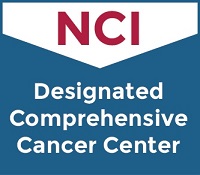Allogeneic Peripheral Blood Stem Cell Transplant
Step 1: Finding a Donor
The search for a donor involves looking for someone who has very similar, if not identical, HLA typing to yours. HLA stands for:
Human
Leukocyte
Antigen
HLA genes are found on the surface of white blood cells, and help our bodies to distinguish between our own cells and foreign cells.
The team will first ask that your siblings get their blood tested to see if they may be a match for you. There is about a 25% chance for each sibling to match you. If there is no match within the family, we will then check the National Marrow Donor Program (NMDP)'s donor registry to see if there is a match. The NMDP has 10 million donors worldwide, and these donors can be accessed through our cancer center's affiliation with NMDP.
Step 2: Donor Eligibility
While you undergo your eligibility testing, your donor does the same to ensure that he or she is healthy and able to donate safely.
- Chest x-ray
- EKG
- Bloodwork, including viral studies (ex: HIV, Hepatitis, Syphilis)
- Urine specimen
Step 3: Stem Cell Donation and Transplant
After your donor is "cleared" to donate, your transplant coordinator will coordinate your admission for transplant with your donor's stem cell donation. While you receive your conditioning regimen, your donor will also be conditioned with neupogen. Your conditioning regimen may be chemotherapy alone or chemotherapy in combination with radiation. This will be determined by your transplant doctor.
Neupogen is given for 5 days and increases your donor's WBC count so that the stem cells multiply and can be collected either peripherally or through the help of a central line catheter.
After the stem cells are donated, they will be given fresh to you the next day. If your donor is unrelated, the stem cells are collected at a different facility and a courier will bring the cells to our hospital.
The stem cells will be given to you through your central line catheter on the day of your transplant. Side effects can include:
- Chills
- Fever
- Hives
- Wheezing
You will be monitored very closely by your doctors and nurses during the transplant for the above side effects.
Step 4: Transplant and Recovery
After your transplant, you may still have some effects from the chemotherapy, including fatigue, nausea/vomiting, and diarrhea. You may need frequent blood and platelet transfusions.
You will be closely monitored by the transplant team in the immediate weeks and months post-transplant for complications.
Potential Transplant Complications:
- Infection
- Organ damage
- Graft-versus-host disease
- Lack of engraftment
- Relapse
Re-admissions to the BMT unit for post-transplant complications are part of the process and are common.
What is Graft-Versus-Host Disease?
Graft-Versus-Host Disease (GVHD) is a common complication after allogeneic transplant that can occur in 20-60% of people who receive a stem cell transplant from a donor. GVHD occurs when a special kind of immune cell in your new stem cells (T cell) launches a response against your body. This can be a mild problem or a very severe one. Organs affected can include the skin, liver, GI tract, eyes, lungs, and mouth.
GVHD can be acute or chronic:
- Acute GVHD develops soon after transplant (often as a mild skin rash) and can subside with medical treatment.
- Chronic GVHD develops several months after transplant and may be permanent.
Your transplant coordinator will talk with you about GVHD.
Leaving the Hospital
- Stay away from anyone who is sick or has been in contact with a sick person. Avoid small children (under 12 years old) and pets.
- Stay away from large crowds.
- Wear your mask outdoors.
- Get plenty of rest.
- Drink lots of fluids.
- Maintain a healthy diet while at home, following the neutropenic diet guidelines.
Caring for Yourself
- Hygiene
- Light exercise
- Eating right
- Maintaining a positive attitude
- Keeping yourself occupied
... are important when you are in the hospital or at home.
Medication Management
It is important to take all medications as prescribed by your doctor. You may need a pill organizer. It may be helpful to keep a log of your medications and any changes made. You will find a medication sheet in the back of your educational booklet to help you do this.


